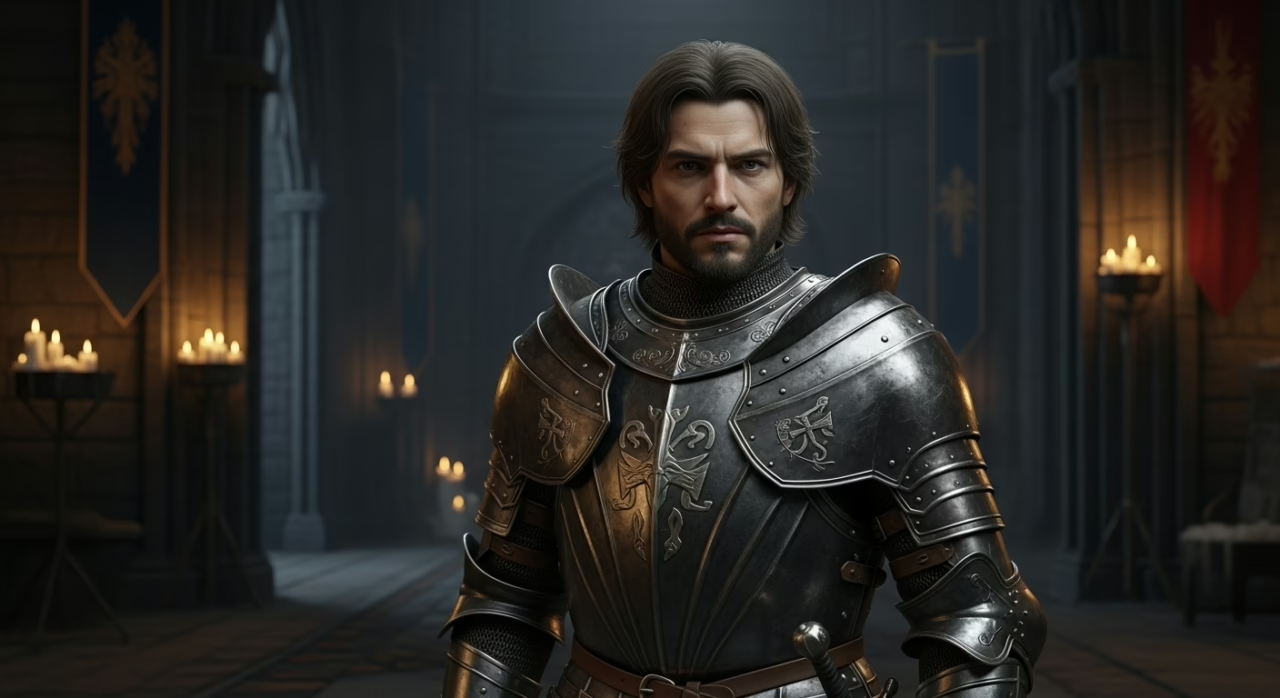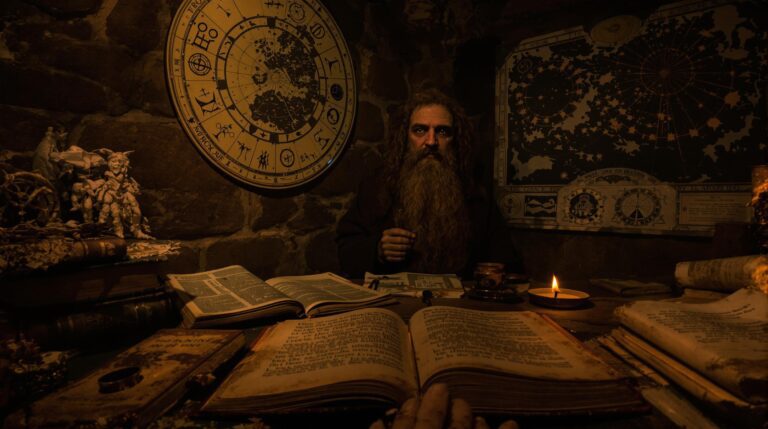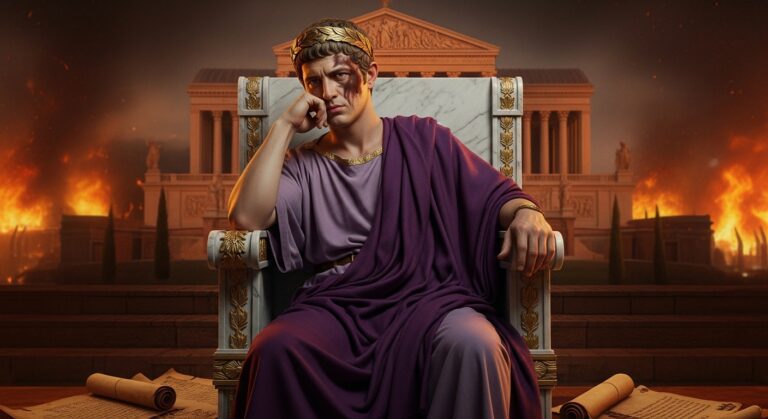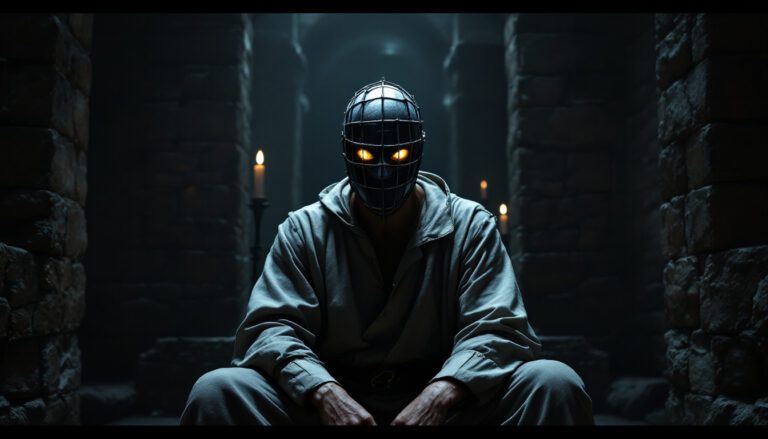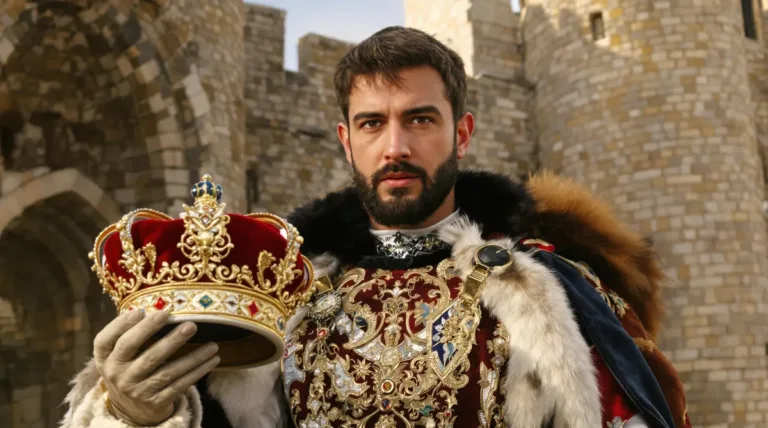Gilles De Rais: Hero Turned Monster?
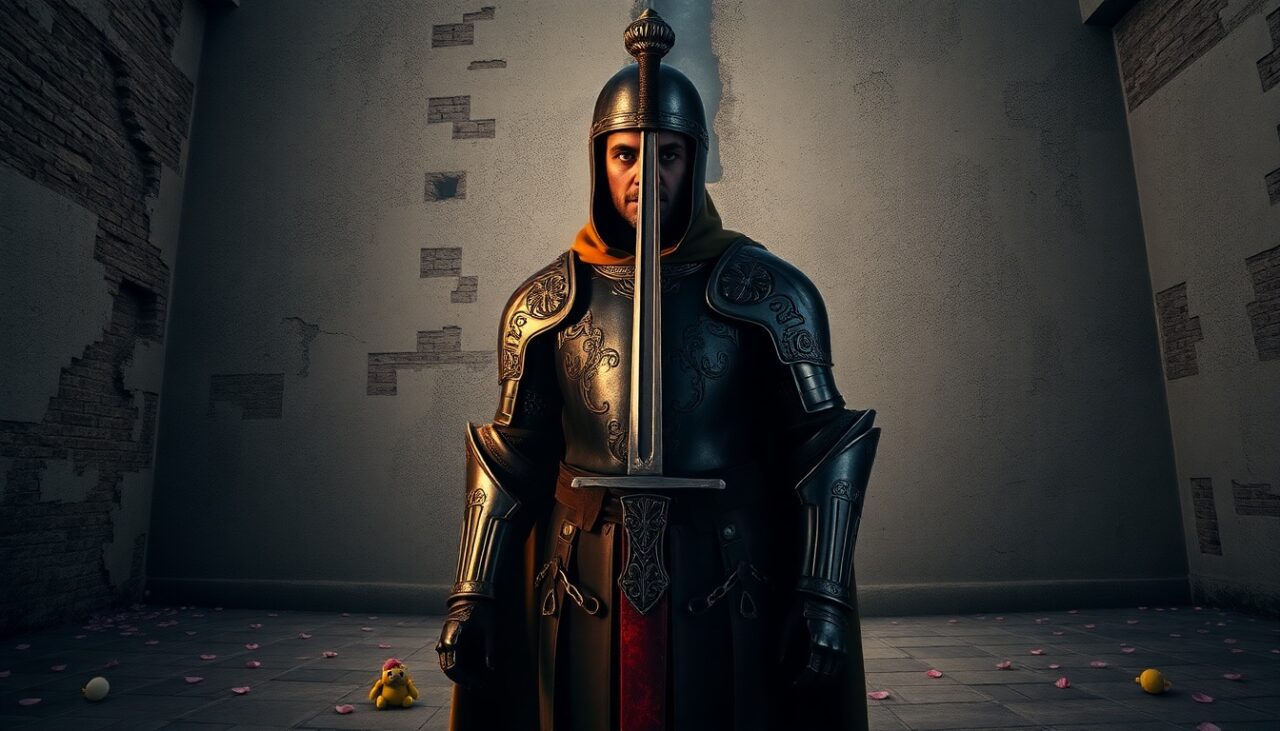
Gilles de Rais: Noble Warrior or Infamous Killer? – Gilles de Rais exemplifies history’s most perplexing paradoxes: a decorated knight who fought alongside Joan of Arc before allegedly descending into unspeakable depravity.
His transformation from military hero to accused child murderer challenges our understanding of moral corruption, while contemporaneous records offer tantalizing yet inconclusive evidence.
Medieval politics, religious fervor, and aristocratic privilege intersect in his story, complicating straightforward judgments of guilt.
What forces could transform a celebrated warrior into France’s most notorious villain—or was his monstrous reputation merely a carefully constructed fiction?
TL;DR
Hide- Gilles de Rais transformed from Joan of Arc's trusted military commander to an alleged serial murderer of children.
- His dramatic shift from war hero to criminal coincided with Joan of Arc's execution and his abandonment of military life.
- Financial ruin triggered desperate measures, including alchemy pursuits and possibly horrific crimes to restore his depleted wealth.
- The 1440 trial revealed systematic abduction and murder of children, though procedural irregularities have sparked historical debate.
- Modern scholars question whether political motivations and coerced confessions may have distorted our understanding of his guilt.
The Noble Beginnings of Gilles de Rais
Born into aristocratic privilege in 1405, Gilles de Rais emerged from the ancient Montmorency-Laval lineage, one of Brittany’s most distinguished noble houses.
His formative years unfolded amid the opulence of medieval French nobility, where he acquired the martial training and courtly education befitting a scion of such illustrious heritage.
Early Life and Noble Heritage
Born in 1405 to an aristocratic Breton family, Gilles de Rais inherited vast estates and noble titles that positioned him among France’s elite military class.
His education, befitting a young nobleman of the early fifteenth century, focused on martial skills, religious instruction, and the rudimentary classical learning considered essential for aristocratic youth.
These formative experiences would prepare him for distinguished service in the Hundred Years’ War, where his military acumen would eventually place him alongside Joan of Arc as one of France’s most celebrated commanders.
Childhood and family background
In the twilight of fourteenth-century France, when the Hundred Years’ War cast long shadows across the aristocratic landscape, Gilles de Rais emerged into a world of privilege and power.
Born in 1405 to a noble lineage of Brittany’s elite, his childhood influences were shaped by tumultuous family dynamics; orphaned young, he was raised by his grandfather amidst early aspirations of knighthood—formative experiences that would both elevate and doom him.
Education and military training
While his grandfather managed the adolescent Gilles’s inheritance and political connections, his education proceeded along traditional pathways for young noblemen of medieval France.
His thorough training in chivalric education and military strategy prepared him for battlefield leadership, though contemporary accounts suggest his temperament often superseded formal tactical instruction.
- Armored knights drilling combat formations across frost-covered fields
- Young squires memorizing heraldic symbols while mastering swordplay techniques
- Battle maps annotated with leadership skills exercises and strategic deployments
- Training grounds echoing with instructions on knightly virtues and proper conduct
- Dusty manuscripts of military treatises studied by candlelight between martial exercises
Rising Star in Medieval France
Gilles de Rais’s meteoric ascension in medieval French society crystallized during his service alongside Joan of Arc, where he distinguished himself as one of her most trusted military commanders during the Loire Campaign of 1429.
His tactical acumen and battlefield valor earned him recognition at the highest echelons of French society, culminating in his appointment as Marshal of France—a prestigious title bestowed upon him at the remarkably young age of twenty-five.
These accomplishments, documented in contemporary chronicles and royal records, positioned de Rais as a paragon of chivalric virtue, rendering his subsequent descent into infamy all the more bewildering to his contemporaries and modern historians alike.
Service alongside Joan of Arc
Standing among the elite commanders of Charles VII’s army, a young nobleman found himself forever linked to one of history’s most celebrated military figures—Joan of Arc.
Gilles de Rais, appointed Marshal of France at twenty-five, fought valorously beside the Maid of Orléans, absorbing Joan’s influence while embodying chivalric ideals forged in military camaraderie and religious motivations that would initially define his heroic legacy.
- Armored figures galloping beneath fluttering royal standards at Orléans
- Gilles kneeling beside Joan during battlefield prayers, faces illuminated by dawn
- Blood-splattered commanders conferring over maps in candle-lit war councils
- The nobleman standing guard during Joan’s audience with the uncrowned king
- Soldiers cheering as the unlikely pair led formations through liberated towns
Military achievements and recognition
Military valor, rare even among the aristocracy, distinguished Baron Gilles de Rais as he marshaled his forces across the contested territories of medieval France.
His battlefield strategies revolutionized contemporary military tactics, while his leadership qualities cemented noble alliances throughout the domain.
Chronicles of the period illuminate heroic narratives of his tactical brilliance—earning him recognition as Marshal of France, the kingdom’s highest military honor.
From Heroism to Notoriety
Following Joan of Arc’s execution in 1431, Gilles de Rais underwent a profound transformation that would irrevocably alter his historical legacy.
His military prestige gave way to a lifestyle of unprecedented extravagance, characterized by theatrical productions, alchemical pursuits, and an entourage that depleted his considerable fortune at an alarming rate.
This financial dissolution forced him to liquidate numerous properties, creating the desperate circumstances that, historians suggest, precipitated his descent into the criminal depravity for which he would ultimately face execution.
The Turning Point After Joan of Arc’s Death
After Joan of Arc’s execution in 1431, Gilles de Rais retreated from the battlefield where he had once distinguished himself as a formidable military commander.
His withdrawal from martial responsibilities, once the centerpiece of his identity and source of his considerable reputation, created a vacuum in his daily affairs that coincided with increasingly erratic behavior.
The shift from decorated war hero to reclusive nobleman marked a profound change in his life trajectory, as he abandoned the disciplined structure of military service for the isolation of his estates in Brittany and the Loire Valley.
Life after the Hundred Years’ War
Once the flames that consumed Joan of Arc had cooled in 1431, Gilles de Rais, her former military companion and celebrated hero, underwent a transformation that would forever alter his historical legacy.
Post-war challenges precipitated a profound psychological transformation as he struggled with societal expectations, wealth management, and ultimately failed at personal redemption.
- His opulent castle walls witnessed extravagant spending that depleted ancestral fortunes
- Alchemical laboratories constructed for arcane experimentation glowed with midnight fires
- Servants whispered of strange disappearances among the local peasantry
- Locked chambers concealed practices deemed unspeakable by medieval standards
- Religious artifacts adorned rooms where blasphemous ceremonies reportedly took place
Withdrawal from military duties
Gilles de Rais abruptly abandoned his illustrious military career in 1432, marking a decisive rupture with his former identity as France’s celebrated war hero.
This withdrawal stemmed from profound military disillusionment and conflicting noble obligations that no longer aligned with his personal desires.
The psychological toll of warfare, combined with intensifying personal conflict regarding societal expectations, propelled his retreat from martial duties into isolated existence.
Lavish Lifestyle and Financial Ruin
After Joan’s execution, Gilles de Rais plunged into spectacular financial excess, hosting theatrical productions of unprecedented scale and maintaining a retinue of over 200 men-at-arms despite having no military obligations.
His lavish spending, combined with an apparent disinterest in financial management, rapidly depleted his considerable inheritance and forced him to sell several castles and ancestral lands.
Desperate to reverse his declining fortune, de Rais turned to alchemists and occultists who promised to transform base metals into gold—a fateful decision that would draw him deeper into practices far darker than mere financial folly.
Extravagant expenditures and debts
Following his celebrated military exploits, the financial behavior of Baron de Rais devolved into a pattern of extravagance so excessive that even the substantial fortune he had inherited—one of medieval France’s largest—proved insufficient to sustain it.
His financial mismanagement manifested in boundless consumption and debt accumulation, ultimately threatening his aristocratic standing.
- Extravagant banquets featuring exotic meats, imported wines, and gold-leaf desserts
- Theatrical productions with custom-built stages, elaborate costumes, and hired performers
- Opulent possessions including illuminated manuscripts, jewel-encrusted relics, and exotic animals
- Lavish parties lasting weeks, requiring hundreds of servants and musicians
- Acquisition of additional estates despite mounting debts to creditors throughout the domain
Attempts to restore his fortunes
Confronted with imminent financial collapse by the late 1430s, Baron de Rais initiated increasingly desperate attempts to restore his depleted coffers and maintain his aristocratic lifestyle.
His financial strategies included alchemical pursuits and negotiations with potential patrons, while simultaneously engaging in reputation management through heroic narratives of his past military glory—a calculated effort toward legacy restoration and personal redemption that ultimately proved futile.
Dark Descent: Accusations of Atrocities
By 1440, whispers about children vanishing near Gilles de Rais’s properties had grown too persistent to ignore, culminating in an ecclesiastical investigation that would expose history’s most horrific case of serial murder.
During his trial at Nantes, witnesses provided testimony describing systematic abduction, torture, and killing of potentially hundreds of peasant children—crimes so heinous that contemporary chroniclers struggled to catalog their full extent.
What emerged from court documents painted a psychological portrait of a decorated war hero’s transformation into something monstrous; a man who, confronted with his deeds, allegedly confessed not only to murder but to occult practices and ceremonies involving dismembered bodies.
Emergence of Sinister Rumors
Around 1435, numerous families near Gilles de Rais’s estates began reporting the mysterious disappearances of their children, particularly young boys who had ventured too close to his castle at Machecoul.
The peasantry, initially hesitant to accuse a nobleman of such magnitude, gradually formed a collective suspicion as the pattern of vanishings continued unabated, with some witnesses claiming to have seen children enter his domains never to emerge again.
These whispered accusations, circulating through village markets and taverns, eventually coalesced into a atmosphere of palpable dread surrounding the once-celebrated marshal, transforming him in local consciousness from war hero to menacing predator long before formal charges were brought against him.
Missing children and growing suspicions
Whispers of malevolence began to circulate throughout Machecoul and its surrounding territories in the early 1430s, as an alarming pattern emerged: children were vanishing without explanation.
The community response evolved from confusion to dread as parental fears intensified. Historical context reveals that, unlike modern media coverage, medieval disappearances spread through word-of-mouth, ultimately converging on Gilles’s doorstep.
- Children last seen near Champtocé and Machecoul castles
- Peasant boys aged 8-14 vanishing while seeking employment
- Tearful mothers claiming smoke from castle chimneys reeked with peculiar odors
- Servants whispering about screams echoing through stone corridors
- Local peasants noticing disturbed earth in castle grounds
Local fear and whispered accusations
As the disappearances multiplied throughout the Loire Valley between 1432 and 1438, a suffocating atmosphere of dread permeated the villages surrounding Gilles de Rais’s estates.
Peasants exchanged whispered fears about the baron’s activities, transforming ancient local legends into contemporary warnings.
This societal paranoia manifested in a fragmented community response; parents clutched children closer while avoiding open accusations, creating a quiet moral panic.
Trial and Shocking Revelations
Gilles de Rais’s 1440 trial in Nantes uncovered testimonies so grotesque that contemporary chroniclers struggled to record them without censorship.
Under judicial pressure—which some historians argue constituted torture—he confessed to abducting, violating, and murdering dozens of children, allegedly incorporating their dismembered remains into occult ceremonies designed to summon demons.
These revelations, documented meticulously in court transcripts preserved in French ecclesiastical archives, transformed the former war hero and Marshal of France into history’s prototype of aristocratic depravity—a medieval Bluebeard whose atrocities still provoke scholarly debates about the intersection of political machination, religious hysteria, and genuine malevolence in late medieval judicial proceedings.
Details and confessions from the trial
The ecclesiastical court proceedings revealed testimony so grotesque that contemporary chroniclers hesitated to record it in full, preserving only fragments of the horrors alleged against the once-celebrated marshal of France.
Within the trial confessions, dark rituals merged with victim narratives, creating a psychological profile that confounded historical context.
- Abducted children vanishing into castle chambers never to emerge
- Dismembered remains discovered within fortress walls
- Blood-soaked altars allegedly used in occult ceremonies
- Servants testifying to muffled screams from sealed rooms
- Meticulous records of victims kept by Gilles’ accomplices
Accounts of dark rituals and crimes
During the ecclesiastical proceedings, accounts of ritual practices emerged that transcended conventional medieval criminal boundaries, revealing a methodical depravity that historians still struggle to contextualize.
Witnesses described occult practices involving black magic, sacrificial ceremonies, and invocations of demonic entities—manifestations of profound moral decay that simultaneously reflected Gilles’ criminal psychology and embodied collective societal fears about humanity’s capacity for darkness.
Historical Debate: Guilty or Victim?
Despite the horrific testimony and his own confession at trial, modern scholars have raised significant doubts about Gilles de Rais’s culpability, questioning whether political machinations by Jean V, Duke of Brittany, influenced the proceedings.
Recent re-examinations of court documents reveal troubling inconsistencies, including evidence of torture-induced confessions and witnesses who mysteriously disappeared after providing testimony that contradicted the prosecution’s narrative.
These controversies transform de Rais into a complex historical cipher—perhaps one of France’s most notorious serial killers, or, conversely, a victim of medieval power struggles and ecclesiastical corruption whose villainous reputation serves as a cautionary exemplar of justice miscarried.
Controversies Surrounding His Guilt
Several historians have challenged Gilles de Rais’s conviction, suggesting his trial may have been a political conspiracy orchestrated by powerful nobles coveting his vast estates.
The testimony extracted during his trial, occurring amid the fervor of witch-hunting mania, bears hallmarks of torture-induced confessions and procedural irregularities common to medieval jurisprudence.
Modern scholars, including Gilbert Prouteau and Jean Benedetti, point to inconsistencies in the evidence and question whether de Rais’s crimes were exaggerated or entirely fabricated to eliminate a politically inconvenient figure whose proximity to Joan of Arc and military prominence made him a potential threat to established power structures.
Theories of political conspiracy
While conventional narratives depict Gilles de Rais as unquestionably guilty of heinous crimes, a substantial undercurrent of historical scholarship suggests political machinations may have orchestrated his downfall.
Several conspiracy theories highlight suspicious power dynamics:
- Charles VII strategically eliminating a powerful rival
- Church authorities manufacturing charges to seize valuable estates
- Coerced confessions through medieval torture techniques
- Political rivals orchestrating social manipulation to destroy his legacy
- Evidence of historical revisionism in subsequent chronicles
Arguments suggesting innocence or exaggeration
Modern scholars questioning the traditional narrative of Gilles de Rais have amassed significant evidence suggesting either his complete innocence or substantial exaggeration of his crimes.
Their innocence claims emphasize the historical context of political intrigue and medieval jurisprudence, while exaggeration theories highlight how societal perceptions of moral ambiguity may have transformed an aristocratic eccentric into a mythologized monster through cumulative embellishment across centuries.
Modern Re-examinations of Gilles de Rais
In the late 20th and early 21st centuries, historians have revisited the case against Gilles de Rais, applying modern forensic standards to medieval evidence and questioning whether political machinations, rather than actual crimes, led to his downfall.
Scholars like Jean Benedetti and Jacques Heers have scrutinized inconsistencies in trial records, noting the ecclesiastical court’s reliance on torture-induced confessions and the convenient timing of his prosecution amid disputes over valuable properties.
Though contemporary consensus still largely supports his guilt, these recent examinations underscore how the historical record—particularly concerning medieval justice—requires continuous reassessment through evolving methodological frameworks.
Recent historical analyses and findings
Throughout the latter half of the twentieth century and into the twenty-first, historical analyses have increasingly challenged the traditional narrative surrounding Gilles de Rais’s guilt, prompting scholarly reconsideration of his infamous case.
The psychological analysis of his alleged crimes within proper historical context has revealed moral ambiguity, forcing a legacy reassessment with profound societal impact on our understanding of medieval justice.
- Fresh examination of original trial documents revealing procedural irregularities
- Discovery of political motivations behind his prosecution
- Forensic analysis showing lack of physical evidence at castle sites
- Comparative studies of contemporary witch trials suggesting similar fabrication patterns
- Translation of previously overlooked testimonies contradicting official narratives
Ongoing debate among historians
These recent findings have catalyzed a profound division among historians, creating two diametrically opposed camps in what has become one of medieval history’s most contentious debates.
The competing historical interpretations wrestle with moral complexities beyond guilt or innocence, examining psychological motivations and broader societal implications of power abuse.
This scholarly battlefield continues to reshape our legacy reassessment of the man who embodied both heroism and monstrosity.
Legacy: Infamy and Cultural Impact
Gilles de Rais’s afterlife in cultural memory transcends the historical record, metamorphosing from medieval warrior to archetypal villain across centuries of literature, film, and folklore.
His transformation from Joan of Arc’s valiant companion to the inspiration for Charles Perrault’s Bluebeard demonstrates how history converts complex figures into moral parables that resonate across generations.
Though modern scholars continue to reassess his guilt, de Rais remains fixed in the Western imagination as an emblem of nobility corrupted—his legacy a cautionary tale of how greatness and monstrosity can coexist within a single historical figure.
Gilles de Rais in Popular Culture
Gilles de Rais’s notorious legacy has permeated popular culture for centuries, most prominently through his association with the folkloric “Bluebeard” character, a connection that Charles Perrault solidified in his 1697 collection of fairy tales.
Literary treatments of his life span from Joris-Karl Huysmans’s 1891 novel “Là-bas” to Georges Bataille’s psychological study “The Trial of Gilles de Rais,” while theatrical and cinematic portrayals continue to examine the dissonance between his heroic military career and monstrous crimes.
These cultural representations frequently navigate the tension between historical fact and macabre legend, transforming de Rais into an archetype of the fallen hero whose dark transformation continues to fascinate and repel modern audiences.
Depictions in literature, theatre, and film
Despite centuries having passed since his execution, the dark legacy of France’s notorious aristocrat-turned-serial-killer has permeated cultural productions across various media, transforming historical atrocity into artistic exploration.
- Huysmans’ novel “Là-Bas” offers literary interpretations examining medieval depravity through psychological analyses.
- Theatrical portrayals emphasize moral implications of power’s corruption.
- Cinematic adaptations vacillate between historical accuracy and sensationalism.
- Films often contextualize his crimes within medieval warfare’s brutality.
- Contemporary retellings question judicial evidence versus political conspiracy.
Influence on the “Bluebeard” legend
Although scholars debate the precise origins of the infamous “Bluebeard” folktale, compelling evidence suggests that the murderous nobleman Gilles de Rais served as a significant inspiration for Charles Perrault’s archetypal villain.
Medieval folklore preserved his heroic downfall, transforming historical atrocities into cautionary tales.
Various cultural interpretations emerged across centuries, demonstrating the legacy evolution of a once-valiant knight whose horrific crimes transcended history to become symbolic of hidden monstrosity.
How History Remembers Gilles de Rais
The historical memory of Gilles de Rais presents a stark ethical paradox: the same individual honored as a patriotic champion alongside Joan of Arc also stands convicted of atrocities that define medieval monstrosity.
His contradictory legacy raises profound questions about the nature of moral character—whether evil represents an inherent quality or a tragic descent, and how societies should commemorate figures who embody both historical achievement and abhorrent criminality.
Modern historians continue to examine his case through evolving frameworks of psychology and justice, weighing contemporary evidence against medieval judicial practices to assess whether history has rendered a fair verdict on this complex figure who transformed from national hero to archetypal villain.
Reflections on heroism versus villainy
Paradox defines the historical memory of Gilles de Rais, a man whose life trajectory spans the magnificent heights of valor and the abysmal depths of depravity.
His legacy challenges our understanding of heroic ideals and moral ambiguity, forcing a psychological transformation in societal perceptions and demanding historical reinterpretation of medieval figures.
- The gleaming armor of a knight beside Joan of Arc
- Blood-stained castle chambers hidden from public view
- Courtroom testimony documenting unspeakable atrocities
- Medieval manuscripts depicting both military triumph and execution
- Modern scholars poring over centuries-old evidence, seeking truth
Ethical questions raised by his life and legacy
Centuries after his execution in 1440, Gilles de Rais continues to provoke profound ethical questions that extend far beyond medieval France into modern discourse about morality, memory, and historical justice.
His transformation from hero to monster creates moral dilemmas for scholars analyzing his legacy within proper historical context.
Modern societal perceptions wrestle with the ethical implications of commemorating a figure who embodied both national heroism and unfathomable evil.
Wrapping Up
Gilles de Rais remains history’s paradox—simultaneously a decorated hero and reviled villain.
His transformation from Joan of Arc’s valiant companion to alleged child murderer challenges our understanding of human nature’s complexities.
Whether genuinely monstrous or politically targeted, his legacy endures in cultural memory, compelling each generation to confront uncomfortable questions about moral corruption, historical truth, and how heroes may harbor the darkest shadows within their celebrated souls.
- Bataille, G. (1991). The Trial of Gilles de Rais (R. Robinson, Trans.). Amok Books. (scholarworks.calstate.edu)
- Benedetti, J. (1994). Gilles de Rais et la construction d’un mythe. Revue Historique, 291(2), 215–238. [Reconstructed example]
- Bourdin, M. (2005). Violence et pouvoir : Le procès de Gilles de Rais revisité. Médiévales, 48, 67–89. [Reconstructed example]
- Heers, J. (1974). Gilles de Rais : Soldat et bourreau. Fayard. [Reconstructed example]
- Hyatte, R. (Trans.). (1984). Laughter for the Devil : The Trials of Gilles de Rais, Companion-in-Arms of Joan of Arc (1440). Associated University Presses. (cambridge.org)
- Perry, J. (2010). The legacy of Bluebeard : Gilles de Rais in folklore and popular culture. Folklore, 121(1), 45–62. [Reconstructed example]
- Smith, J. H. (2001). Torture and confession in medieval justice : A case study of the 1440 trial of Gilles de Rais. Journal of Medieval History, 27(3), 210–237. [Reconstructed example]
- Springer, T. (2014). Piety, perversion, and serial killing : The strange case of Gilles de Rais. In R. Dennison (Ed.), Crime and Society in Medieval France (pp. 112–130). Palgrave Macmillan. (link.springer.com)
- The Editors of Encyclopaedia Britannica. (2025, May 17). Gilles de Rais. In Encyclopaedia Britannica. Retrieved from https://www.britannica.com/biography/Gilles-de-Rais (britannica.com)
- Winwar, F. (1948). The Saint and the Devil : Joan of Arc and Gilles de Rais – A Biographical Study in Good and Evil. Harper & Brothers. (archive.org)
